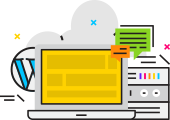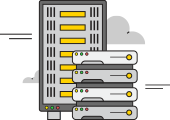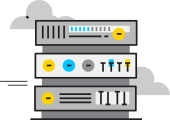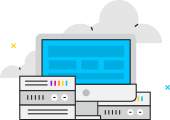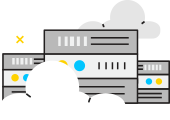Pharming, a portmanteau of “phishing” and “farming,” is a nefarious cyber attack that stealthily redirects users to fraudulent websites, aiming to deceive and harvest sensitive information. It is a sinister cousin of phishing, and it operates by manipulating the Domain Name System (DNS) or other elements of the internet infrastructure. This article delves into the history, workings, types, and future prospects of Pharming, while also discussing its implications for proxy server providers like OneProxy.
The history of the origin of Pharming and the first mention of it
The term “Pharming” was first coined in 2005 by Don Jackson, a security researcher at SecureWorks. However, the concept of maliciously redirecting web traffic dates back to the late 1990s when cybercriminals started exploiting vulnerabilities in DNS systems. Pharming emerged as a more sophisticated attack vector than traditional phishing, which often relies on luring victims to fake websites via deceptive emails or messages.
Detailed information about Pharming: Expanding the topic
Pharming exploits flaws in the DNS, the decentralized system responsible for translating human-readable domain names into IP addresses that computers understand. Instead of relying on users to click malicious links, Pharming manipulates DNS records, redirecting victims to rogue websites without their knowledge or consent. This makes it a particularly insidious form of cyber attack, as users may think they are accessing legitimate sites while unknowingly divulging sensitive information.
The internal structure of Pharming: How Pharming works
The anatomy of a Pharming attack involves several key components:
-
Compromised DNS Servers: Attackers gain unauthorized access to DNS servers, altering their records to redirect traffic to malicious destinations.
-
DNS Cache Poisoning: By exploiting vulnerabilities in DNS caching mechanisms, attackers can poison the cache of a DNS server, leading it to return incorrect IP addresses for legitimate domain names.
-
Router Attacks: In some cases, attackers compromise home or small business routers, changing their DNS settings to redirect users to fraudulent websites.
-
Malware-based Pharming: Cybercriminals can infect users’ devices with malware, modifying the hosts file or DNS settings on the infected machine to achieve the same fraudulent redirection.
Analysis of the key features of Pharming
Pharming possesses several distinctive features that set it apart from other cyber threats:
-
Stealthy Nature: Pharming operates silently, making it challenging for users to detect they are on a fraudulent website.
-
Target Independence: Unlike phishing, Pharming does not depend on enticing victims to click malicious links, making it more indiscriminate in its potential targets.
-
Evasion of Security Measures: Traditional security measures like SSL certificates and URL verification do not prevent Pharming attacks, as users are directed to the correct website despite the malicious underlying redirection.
-
Long-lasting Impact: Once DNS records are tampered with, the attack can persist until the records are rectified, allowing attackers to harvest sensitive information over extended periods.
Types of Pharming
Pharming can be categorized into two main types: DNS Pharming and Hosts File Pharming.
DNS Pharming
| Type | Description |
|---|---|
| Local DNS Pharming | Attackers target a user’s local network or router, poisoning the DNS cache to redirect users to fraudulent websites. |
| Remote DNS Pharming | Attackers compromise DNS servers directly, altering their records to redirect a large number of users to malicious sites simultaneously. |
Hosts File Pharming
In this type of Pharming, attackers modify the hosts file on a victim’s computer, overriding legitimate DNS resolution with their fraudulent IP addresses. It is less common than DNS Pharming but can still be effective on individual devices.
Uses of Pharming
The primary use of Pharming is to deceive users and collect sensitive information, such as login credentials, financial data, and personal details. Once obtained, this information can be exploited for identity theft, financial fraud, or other malicious purposes.
Problems and Solutions
-
DNSSEC Implementation: Deploying DNS Security Extensions (DNSSEC) can help protect against DNS Pharming attacks by ensuring the authenticity and integrity of DNS data.
-
Secure Routers and DNS Servers: Regularly updating router firmware and implementing strong security measures on DNS servers can mitigate Pharming risks.
-
Multi-factor Authentication (MFA): Enforcing MFA adds an extra layer of security, even if login credentials are compromised through Pharming attacks.
-
User Education: Raising awareness among users about the risks of Pharming and advising them to verify website URLs can help prevent falling victim to such attacks.
Main characteristics and other comparisons with similar terms
| Characteristics | Pharming | Phishing | Spoofing |
|---|---|---|---|
| Method of Attack | Manipulates DNS | Deceptive emails | Impersonates source |
| Victim Involvement | Passive | Active | Passive |
| Redirect Mechanism | DNS records | Clicking links | None |
| Target Specificity | Less targeted | Highly targeted | Targeted |
| Detection Difficulty | Difficult | Moderate | Difficult |
| Response to Security Tools | Bypasses some | Evasion is harder | N/A |
As technology advances, so will the methods and sophistication of cyber attacks like Pharming. DNS security enhancements, AI-driven threat detection systems, and more robust authentication mechanisms will be crucial in combating future Pharming attacks.
How proxy servers can be used or associated with Pharming
Proxy servers like OneProxy can play a dual role concerning Pharming attacks. On one hand, they can be part of the defense mechanism, offering security features such as web filtering, traffic analysis, and malicious website blocking to protect users from Pharming threats. On the other hand, cybercriminals might exploit proxy servers to hide the true origins of Pharming attacks, making it harder to trace and stop malicious activities.
Related links
For more information about Pharming and its impact on cybersecurity, you can visit the following resources:
- Cybersecurity and Infrastructure Security Agency (CISA)
- Secureworks – Understanding Pharming
- DNSSEC: Securing the Domain Name System
In conclusion, Pharming remains a significant threat in cyberspace, exploiting vulnerabilities in DNS infrastructure to deceive unsuspecting users and harvest their sensitive information. As the digital landscape evolves, it is crucial for users and organizations to stay vigilant, adopt robust security measures, and collaborate with reliable proxy server providers like OneProxy to fortify defenses against Pharming and other cyber attacks.
